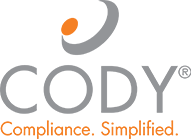The Millions of Dollars in Savings You’re Not Seeing – PART 1 of 2
The “cost to do business” doesn’t have to be so expensive for government-sponsored health plans. Most payers are overspending on their annual print and fulfillment budget for member communications by 10-15 percent. For plans with 250,000 members, for example, cutting a 15 percent overspend factors to saving $1.2 million a year.
There are a number of ways health plans can cut unnecessary expenses, both before hiring a print and fulfillment vendor and during the course of the relationship. The key is knowing where to look.
This blog entry, Part 1 of 2, shares what you can do before you contract a print and fulfillment vendor:
Get your process workflow in order.
If your health plan is providing its print and fulfillment vendor files that have errors, do not have all necessary approvals or are not in compliance with CMS, you have problems right out of the gate. Errors in data grids and crosswalks alone lead to costly reprints.
Make sure your marketing communications and compliance departments have the right tools to streamline workflow, track materials and ensure compliance. That way, your materials are in the best possible order before they go to the printer. This also helps set a good example for the vendor and implies you have high expectations for them, as well.
Understand the vendor’s true capabilities.
Select a vendor that matches your level of success. The larger the health plan, the greater the complexity of its printing needs – especially for government-sponsored plans with the additional risk that the Annual Notification of Change (ANOC) bring.
If you hired a local vendor when your health plan had 15,000 members and it now has 50,000 members, seriously consider investigating whether that vendor is still the best fit. A smaller vendor simply may not be able to handle the numerous checks and balances required to meet CMS regulations.
In the RFI, ask questions specifically about Medicare and Medicaid.
In your Request for Information, ask the vendor questions that allow you to confirm they understand and have the ability to handle the complexities of CMS, such as: “Can you give an example of how you have handled the ANOCs in the past, including how you addressed challenges with deadlines for these document?”
Consider hiring an unbiased, independent consultant to do the RFI for you, and ask them to use a weighted scale based on importance to find the vendor that best meets your needs.
Do a site visit before hiring the vendor.
Visit the vendor’s facility before making any hiring decisions. Observe their output and Q&A process, which is spot-checking materials for quality as they come off the press. Also, make sure the equipment can handle the size of print runs you know your health plan will require during the busy time of year. Failure to do this could result in missed sales opportunities due to materials not being available.
Ensure the vendor is flexible enough to handle delays caused by CMS.
A Service Level Agreement (SLA) is a timeline of all tasks associated with a print job. It’s especially important for government-sponsored health plans to make sure the vendor is flexible enough to handle delays and complications presented by CMS that will impact production timelines.
Your vendor must understand that they may have either 10 days or two days to produce materials, and they must be able to manage their workflow to accommodate expedited jobs. Make sure the vendor’s SLA is flexible enough to meet your deadlines.
